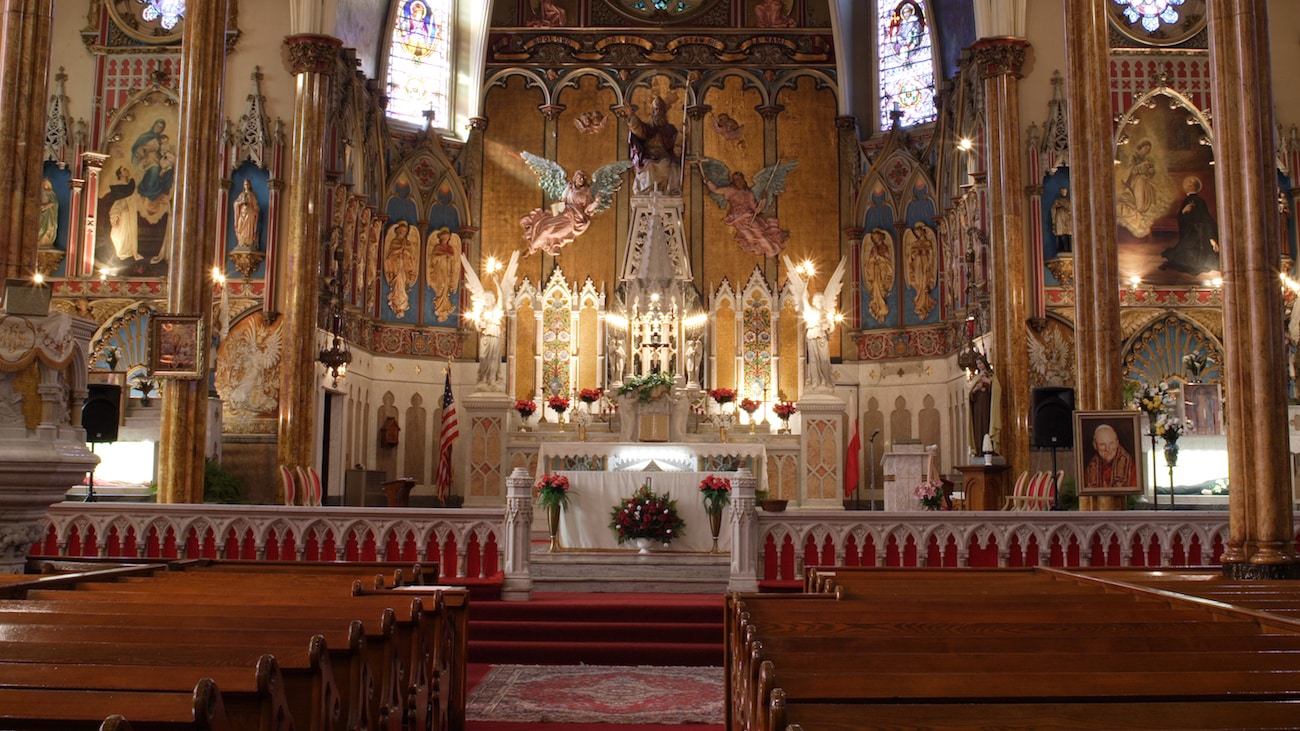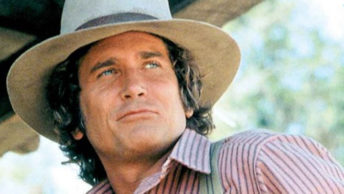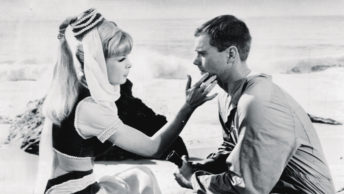Few religious publications are willing to delve into the issues facing the Catholic Church today when it comes to declining attendance. Most priests do not want to recognize the fact that churches are now emptier today than ever before and parochial schools are closing at an accelerating rate. They feel comfortable in restating the same lines learned in the seminary years ago. Trust in God and He will bring back the parishioners that have left. However, the sad reality is that our society in the United States has and is changing and the Church is not changing with it and/or recognizing the changes.
Only about half of Americans are married today, down from 72 percent in 1960. The age at which one first gets married has risen by six years and now only 20% of Americans get married before the age of 30. Why has marriage declined? Most experts point to the woman’s liberation movement in the late 1960s and 1970s. As more women earned college degrees, entered the workforce and delayed motherhood, marriage became less necessary for their economic survival. Studies have been published linking the use of the birth control pill to women’s earnings. Access to the pill narrowed the gender wage gap. Although the divorce rate has fallen since the 1980s, when it was at an all-time high, it is still twice as high as it was in 1960 and currently hovers around 50%. Sadly, our ranking on the socioeconomic ladder determines our willingness to marry.
The U.S. birth rate is declining. According to the National Center for Health Statistics, there were 3.93 million births in the United States in 2013, 9% below the high in 2007. The average number of babies dropped to a record low of 1.8 babies, well below the 2.1 needed for a stable population. Statistics show that birth rates among Catholic couples fell well within the current national statistics.
The concept of the family is changing. Fewer than 25% of American households are made up of a married man and woman with their children. The change in the makeup of the American family is the result of two primary factors: more babies are now born out of wedlock and second, divorce rates remain high resulting in nearly half of all marriage contracts being broken. The overall attitude toward relationships and commitment has shifted. Having a child outside of marriage is acceptable. Having a wedding after the baby is also not uncommon. Cohabitation is on the rise and lasting longer.
Overall, America’s Catholic schools are closing at a rapid rate. At their peak in the mid-1960s, more than 13,000 Catholic elementary and secondary schools enrolled 12% of U.S. school children. But by 2012, fewer than 7,000 Catholic schools enrolled about two million, or 5% of U.S. school-aged children. Why? A number of reasons explain the decline: No more nuns. From a peak of over 100,000 sisters in the 1960s down to about 6,500 in 2010 still working or less than one per Catholic school. Rising tuition. In 1970, nearly 75% of all Catholic schools charged less than $100 in tuition. By 2010, the average tuition was about $4,000 at a Catholic elementary school and around $8,000 for a high school. The Church itself, many scholars suggest, would like to withdraw from general education and use its limited resources for strictly religious education.
Given all of this, we might ask whether faith formation classes on Sunday morning at a local parish are a good substitute for a Catholic education? Do enough children participate to make it a meaningful endeavor? Scholars all seem to agree that the Catholic home is the best place to foster the Catholic faith. But if neither of the parents participate in their Catholic religion to any extent, will parish-provided faith formation provide any lasting benefits?
The Catholic congregations are aging and dying off. At least 60% of most congregations today are over 65 years of age. The older the church’s membership, the more likely that the church is to have falling numbers, weaker finances, anemic youth programming and a sense of spiritual fatigue.
The pews will remain empty unless the Catholic Church can address the issues blocking attendance. This will not be an easy task. The issues have to be addressed at the highest level in the Church.









The article misses the point in a number of important areas, and the language itself is problematic
Bishop Robert Barron correctly identifies the Huge Harm from the Homosex Ephebophile ‘priest’ Scandal Targeting Adolescent Boys as a central factor in the American Church and its relations with Rome
“Women’s Liberation” is politically biased & misleading – The real issue is poisoning of the well by Radical Gender Feminist MISANDRY (Hatred of Men & Boys, Masculinity & Normal Heterosexuality), making the whole ‘Dating / Relating’ scene more like playing hopscotch in a minefield. The insanity of Men making a commitment to ‘Love, Honor & Cherish’ those who despise, demean and denigrate them gets no mention
Catholic Schools that Are Catholic do better than schools where the staff despises Church Teaching and functions as an arm of the Dem-Krat Party
It is no joke to say the best way to drive young people from the Church is to send them to a Catholic College
The 50% Divorce Rate fails to account for Multiple Marriages – pegging the number at a higher level than justified – although it functions as a Feedback Loop helping to bring about a self fulfilling paradigm
A secularized Mass offered by a secularized priesthood. Bishops and priests who are for the most part unable to articulate the transcendent reality of human life in which we are all destined for death, judgement, Heaven or hell but who instead speak the language of moralistic therapeutic deism – “be nice ’cause Jesus was nice”. Modernism has triumphed in nearly all quarters of the mainstream, human part of the Church ascending all the way to to the highest office in Rome. If one honestly looked for the answer to the question “Where are the vocations, and where are the Catholic laypeople who follow the teachings of the Church?” one would find it in parishes built on the “old” Mass. This answer of course is unacceptable to the majority of the hierarchy, at least for now. “Traditional” Catholicism is authentically Apostolic, mere, Catholicism and these Traditional Catholic parishes are the places where there is an abundance of sacramental grace and vocations. They are the future of the Church.
The average parish is now trying to compete with the non-denoms and fundamentalist protestant churches with their praise teams and high tech entertainment. Who can respect a Church when it has become a come as you are (indecent or otherwise) no one goes to hell anymore, rock and roll good time “church service”. I couldn’t take the arm waving, badly done folk/rock liturgical music, altar girls (no boys) and mini-skirted lectors, not to mention EMs looking like they were wearing whatever they picked up off the bedroom floor from the day before, distributing Holy Communion. Catechesis is apparently not happening in any meaningful way except perhaps for RCIA bringing in converts who actually know why they want to be Catholic. (I am in that category.)
Someone pointed out below that no one talks to each other. Studies have shown that liturgical churches, especially Catholic are very unfriendly places to visit. Everyone keeps their faith under a bushel and don’t want to focus on others. The traditional parish to which I belong now is no different; it was six months of attendance before people would return a “Good morning.” As an aside I thought the “year of evangelizing was laughable for the reasons above. Go to a large protestant church and you are greeted and immediately recognized as a visitor, made to feel welcome and often introduced to someone who eagerly finds you seating and stays with you to answer questions…fellowship, bible study and other family activities to follow. Consider the un-churched person with no liturgical background who walks into a Catholic church. They’ll probably never be back. Even though some parishes have greeters they assume everyone is Catholic and the poor souls are on their own.
In contrast, I think that one would find the only growth is with traditional parishes, especially those with FSSP (Priestly Fraternity of St. Peter) pastors. Unfortunately these sheep are rustled from “modern” parishes and are seeking a reverent, dignified and holy worship experience. When people have such little respect for God and His Church, that they feel making an effort to dress respectfully, (shorts, flip flops, tank tops or even jeans and a clean shirt are not in the “respectful” category) sip water and give kids snacks in the pews, take cell phone calls during the sermon/homily and all other manner of abuses which are either entertained or ignored by the pastor…you get what you allow. The bishops and pastors are now so afraid of “offending” someone by actually demanding propriety of dress and behavior, that everything from dress to music is speeding downhill to the lowest common denominator.
I concur with most of the other observations and will close with an anecdote from personal experience. I do wear a coat and tie when I attend mass. A man and his wife sat next to me when I was parish shopping and snarlingly asked if I was an important person. He was wearing the current Catholic uniform of shorts, sandals and short sleeved shirt; his wife similarly attired. I simply said that no, I was there to worship God. He stated: “Well, I’m here to have fun.” I believe that pretty much puts in a nutshell what has happened to us as a result of poor church leadership.
Not only discussed at “the highest levels” of the Catholic Church, but also, at the “lowest” levels – among the Laity who do still go to church, and their priests and pastors. BUT WE DON’T TALK TO EACH OTHER…or at least the priests don’t talk WITH us. They blather empty pieties and run off and seclude themselves to do who knows what?
It’s TIME for PUBLIC FORUMS among Catholics – and we don’t need the priests to initiate this, though they are certainly welcome to attend, and in fact, would be conspicuous by their absence.
Not only discussed at “the highest levels” of the Catholic Church, but also, at the “lowest” levels – among the Laity who do still go to church, and their priests and pastors. BUT WE DON’T TALK TO EACH OTHER…or at least the priests don’t talk WITH us. They blather empty pieties and run off and seclude themselves to do who knows what?
It’s TIME for PUBLIC FORUMS among Catholics – and we don’t need the priests to initiate this, though they are certainly welcome to attend, and in fact, would be conspicuous by their absence.
Lack of holiness among the clergy is the main reason for empty churches. A saint is a magnet. A parish with a holy priest is standing room only. This has been my observation. A lot of clergy are doing their own will, not Gods will including my own parish priest who galavants all over the world while catholic children in the district have never seen the inside of a church. Sad for the laity and eternally frightful for their own souls
Empty pews? For causes, start with the Novus Ordo Mass, lack of any Catechesis, and near removal of the Sacrament of Penance
I felt as though this was a very well-thought-out article on the subject.
I believe that the answers can be found through exploring the fact that we now live in a fragmented society with instant gratification around every corner. In years past, people turned to prayer and went to confession when they were struggling with temptations, grief, trauma, guilt, and shame. It appears as though the majority of individuals no longer feel as though it is necessary for them to turn to their church, to prayer, to their Father in times of need. In addition, we need to be investigating how well the church welcomes newcomers and embraces those returning to the church after a short or long hiatus. Is the church open to non-Catholics from non-Catholic families learning about and entering the Catholic faith? Is the church willing to forgive and accept those who are Catholic but have strayed due to struggles in their own life?
I hope that my own personal story will garner some understanding on the subject. As a child, I attended Catholic Church, I found great peace and comfort in prayer, and I felt as though I had a strong relationship with God. However, between my childhood and my young adulthood, I experienced trauma and father abandonment that led me to develop dark thoughts and feelings. Sadly, I began to question my faith. I felt angry, ashamed, tarnished, and cynical. After I married, I had a difficult time conceiving and then I experienced a miscarriage after achieving a pregnancy. For me, the loss of my beloved unborn baby was the final straw; I felt abandoned by God as well as heartbroken and lost. The relationship with God felt broken. This was not an evil and impulsive choice made by me. Rather, I was led to this loss of faith through years of negativity, struggle, and overwhelming sadness.
Grief and trauma, whether it be caused by war, assault, a bad accident, abuse, etc., may cause someone to lose faith in anything good or whole or dependable. I believe that the connections between trauma and loss of faith go way deeper and far beyond merely losing trust in goodness. Shame, guilt, self-hatred and self-disgust can occur through poor choices, such as after giving into temptations, and also in situations where an individual is not given a choice, such as when someone is victimized through abuse and/or assault. Feelings of guilt, self-hatred, self-disgust, and shame can cause someone to feel as though they are undeserving of anything good. Wouldn’t that also apply to God’s love, forgiveness, and acceptance? Indeed, there are individuals who can turn to their faith during times of darkness and they can experience comfort and relief. But what about those people who are so lost and ashamed that they cannot accept love from a higher power because their self-hatred makes it impossible?
Furthermore, if traumatized individuals perceive themselves as being bad and unworthy of forgiveness, how can they fully experience the purity, sacredness, and goodness of any faith? The reality is that they may struggle because the traumatic reaction prevents them from a full immersion in the spirit. In fact, some traumatized people feel as though they are completely spiritless or literally soulless. As I stated above, since we live in a fragmented society where individuals no longer feel compelled to turn to their faith in times of need, we are experiencing more and more empty pews.
Now, as a grown married woman with two young children, I long to return to the comfort of my faith and to raise my children with the traditions and values present in the church. Yet, how do I return as a “recovering atheist” without feeling out-of-place and unwelcome, as a sinner in a sea of holiness? No one is perfect and everyone is hiding something from others in the world. Recall that Jesus said, “He who is without sin among you, let him be the first to throw a stone at her,” when referring to a sinner (in this case in The Bible, it was an adulterous woman)? And what happened as a result of this, did they stone the woman for her sins?
Likewise, the Catholic Church must be willing to welcome and embrace newcomers and those returning to the faith, without condemning them or shaming them for straying for so long. As a faith, we must also accept the changes within our society and learn to adapt to them while also striving to honor our traditions, our values, and our beliefs. If we are to cast stones, let us without sin be the first to throw. We must be the light in the world that seems to be filling with darkness and, when we feel tempted or frightened, we must turn to our faith to help us continue our journey of spreading the light.
I believe you are confusing results, divorce, cohabitation, decline in vocations, with causes. The cause of all of this is a Church that has decided human respect is more important than God’s Truth. Why come to Church when all it has to offer is the Culture Of Death in nice clothes? If you think that is extreme, only look at the abortionist invited to meet the Pope, the author of, “The Popularion Bomb,” transexuals, homosexuals, etc., etc., etc.
This is why the pews are empty.
Q: Why such empty pews?
A: Vatican II.
“…the sad reality is that our society in the United States has and is changing and the Church is not changing with it and/or recognizing the changes.”
Actually, the reality is that when the liturgy changed, and doctrines changed, and morality changed, the people in the pews no longer considered the Church to be Divinely founded or commissioned. God is unchanging.
Change is the enemy. People want stability. Now we have at least 2 generations of “Catholics” who believe that God is pro-gay, and of course He’s OK with birth control. We are living in the times of the great apostasy. The faithful know this, some of the clergy know this, but the hierarchy is either in denial or working for the enemy.
Well said! And absolutely true!
“The issues have to be addressed at the highest level in the Church.”
The very ones who have caused the precipitous decline in all things Catholic, with no end in sight. In fact, they are accelerating the demolition.
Very well said. I believe another key factor for Catholics is that a common sense understanding of why they need to attend Mass has been completely missing. I am also in NJ and we have been having great success with bringing Catholics back to attendance at Mass by providing this common sense explanation. If people don’t have a good understanding of why they need to do something, then they won’t do it. This is the explanation that we have been providing and it is making a difference. http://www.catholic365.com/article/4137/perfect-sense-a-common-sense-explanation-of-why-each-one-of-us-needs-to-attend-mass-on-sundays-and-holy-days.html